This afternoon I had an appointment for acupuncture, and as I was drifting off into a needle-induced temporary coma (if you haven’t tried it, you should!) I was thinking about what I should post for Friday. Then I thought about how it seemed like such a short time between my Wordless Wednesday post and planning for Friday’s post, and in a sudden epiphany I realized that I had posted the WW post today! I DO know what day it is, and I did write the WW post on Wednesday, but I must have had a senior moment. I went back and changed the date so nobody who visits that post in the future will realize that I messed up. To all of the loyal readers out there, THANK YOU for not saying, “You dummy, it’s Thirsty Thursday not Wordless Wednesday!” 🙂
My coworker and pal, Scott Barringer, suggested that I write a post explaining the different types of hinges and when to use them. I knew I would need some photos, so I asked another coworker and pal, Nolan Thrope, and he came through big-time. This post will not discuss every type of hinge there is, but will hopefully clear up some of the mystery around the types that cause the most confusion. If you think I should include another hinge, just leave a comment and I’ll add it.
The hinge types that I will address are:
- wide throw
- swing clear
- raised barrel
- anchor hinges
Wide throw hinges are used when you need extra clearance behind a door – typically a door that opens 180 degrees. In the good old days this clearance was usually needed because of fancy wood trim around the frame. Today, they are more commonly used when a door needs to open 180 degrees and sit parallel with the wall, held open on magnetic holders. You need enough space behind the door for the hardware – possibly a lever handle and a closer, and the projection of the magnetic holder has to match the clearance behind the door at the hinge edge. If the two dimensions are not the same, the door won’t sit parallel to the wall. There are other applications for a wide throw hinge, but hopefully you get the picture.
So how wide does a wide throw hinge need to be, anyway? I found this gorgeous illustration along with the formula in the Hardware Age Builders’ Hardware Handbook by Adon H. Brownell, AHC. This book is long out of print, but I found it on eBay and I just love it! With this formula you can calculate the proper hinge width depending on how much clearance you need.
Here are a couple photos of wide throw hinges. The first was used to allow a double egress pair to open (almost) 180 degrees. The second was used on an unusual application where an old door was mounted on top of a new door, creating a very thick door (you can see more photos of that door here). Note that the closer on the double egress door has an extra-long arm to accommodate the 8″ wide hinges. The LCN engineering department can help you determine whether a special template is required for your application. Keep in mind that wide throw hinges reduce the clear opening width when the door is open 90 degrees, which is where the accessibility standards measure the clear width.
Swing clear hinges are used to swing the door out of the clear opening of the frame when the door is open approximately 95 degrees (the door will project slightly past the frame stop if open to 90 degrees). Swing clear hinges are most commonly used in hospitals, where removing the door from the opening increases the clear width and also helps prevent damage to the door edge from carts and equipment. I have occasionally used swing clear hinges on a door that didn’t provide the required 32″ clear width. One thing to note is that the hinges are very visible on the pull side of the frame when the door is closed, which could be a problem depending on the aesthetic requirements.
[There’s a short video here that shows a hospital door with swing-clear hinges.]
On a raised barrel hinge, the barrel is offset to one side instead of centered between the hinge leaves. This type of hinge is fairly rare, but it is used when the barrel of a standard hinge would interfere with a special frame condition or trim. Here is a graphic of a Bommer raised barrel hinge, and two examples – one is a raised barrel hinge used because of a deep reveal on the frame, and one that should have been a raised barrel hinge to avoid the conflict with the trim:
An anchor hinge is used as the top hinge for high-use or heavy doors. In addition to the standard hinge leaves, there are flanges that attach to the top of the door and the underside of the frame head. These hinges require a special door and frame prep, and the hinges are handed – either left hand or right hand. Here is a graphic of a Bommer anchor hinge, as well as a photo of an anchor hinge installed:
If you have anything to add, please leave a comment. Thanks to Nolan for all the photos, as well as Ives and Bommer for the hinge graphics.
By special request, I will do a separate post on continuous hinges sometime soon!
You need to login or register to bookmark/favorite this content.

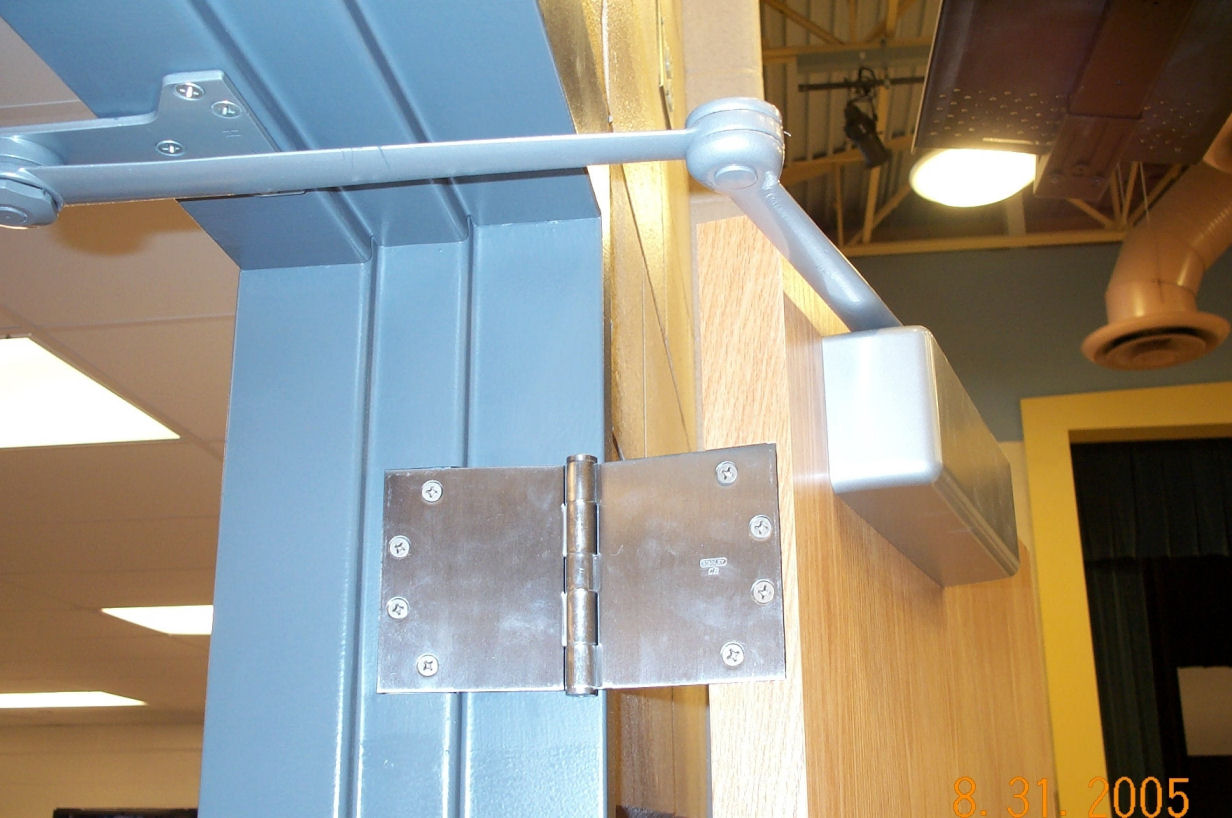
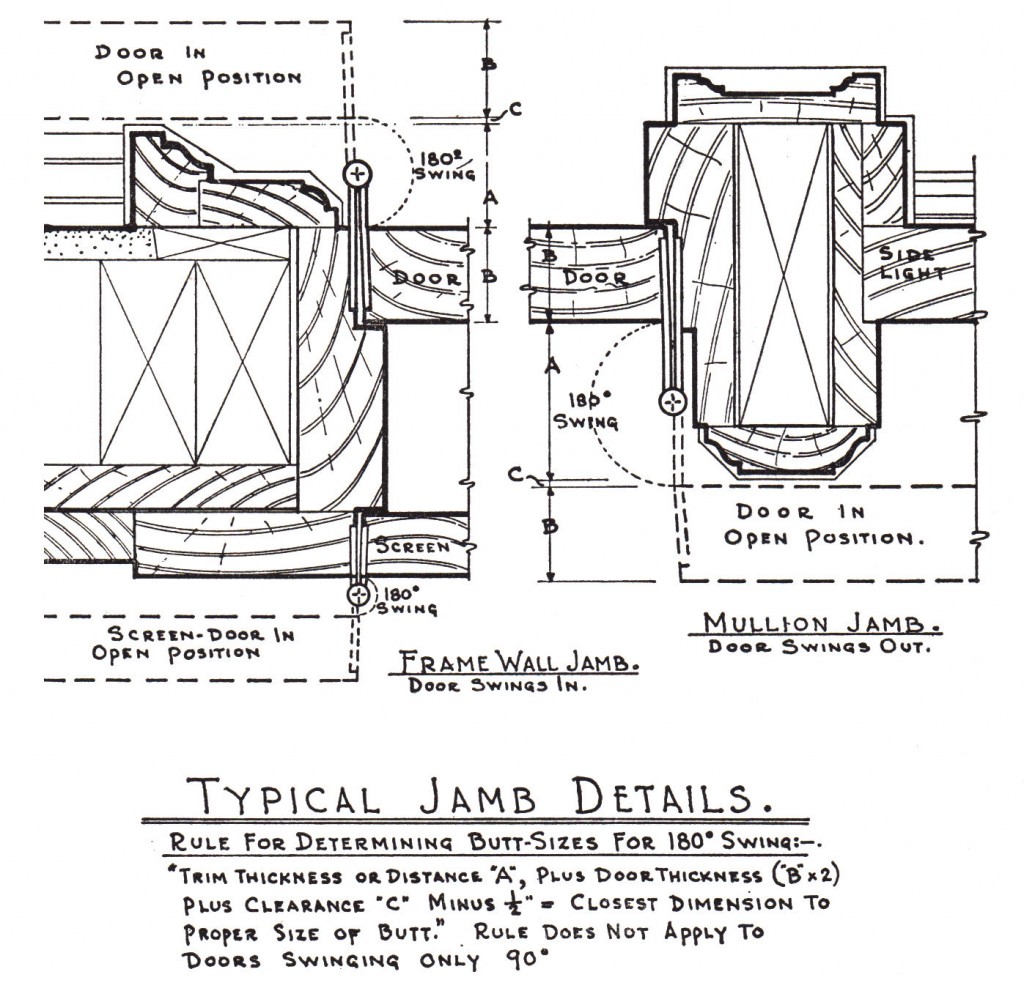
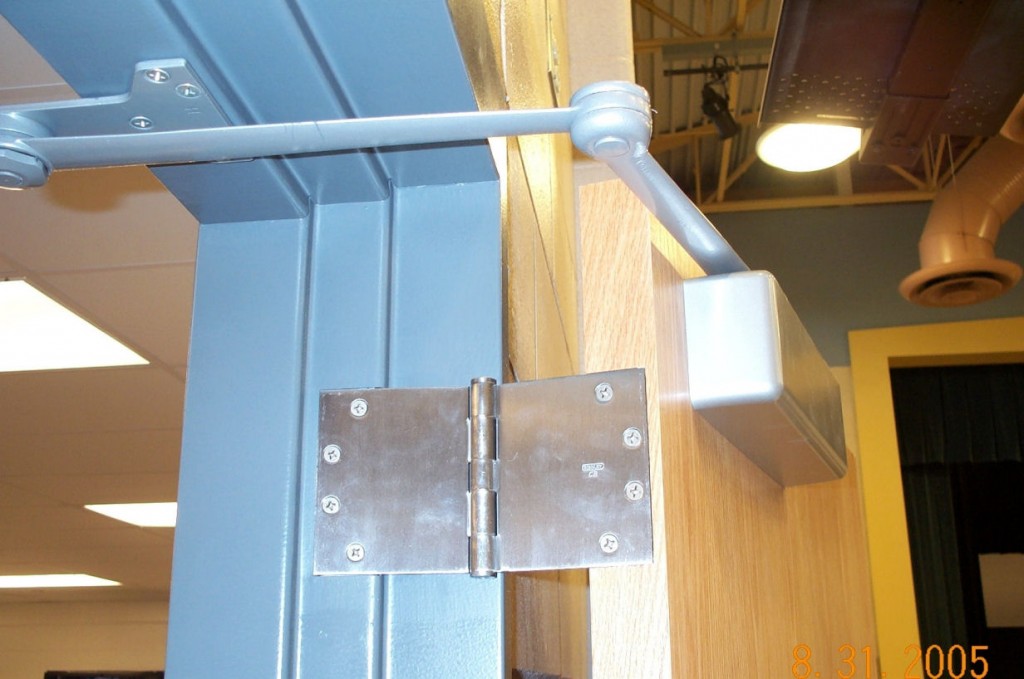
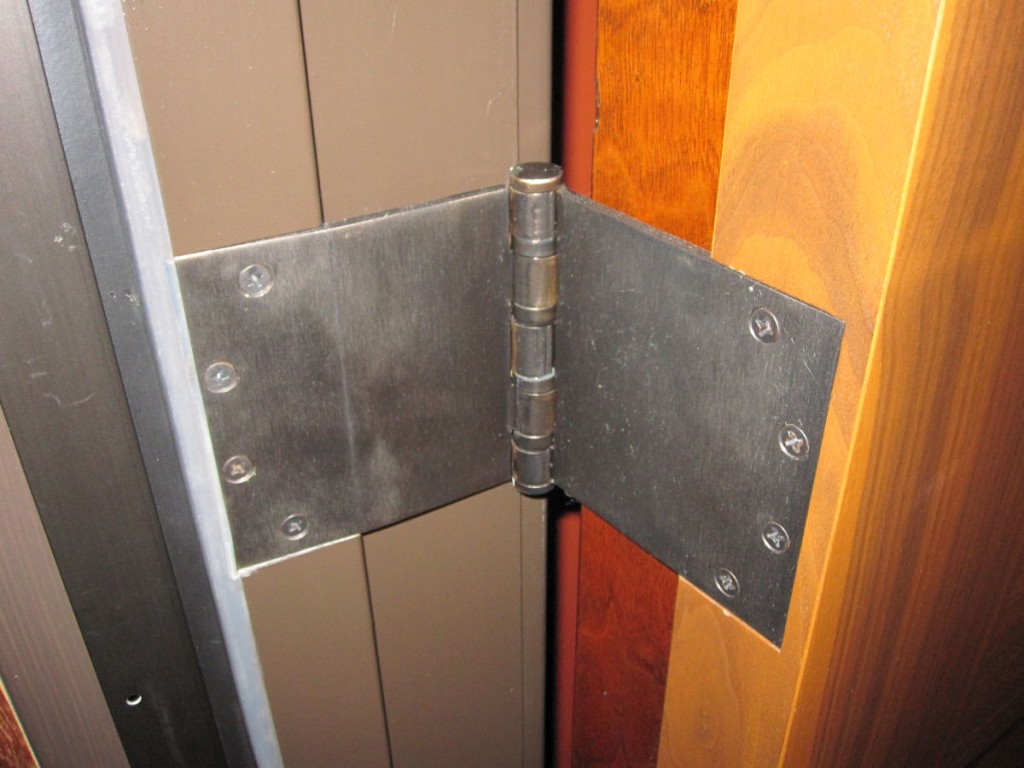
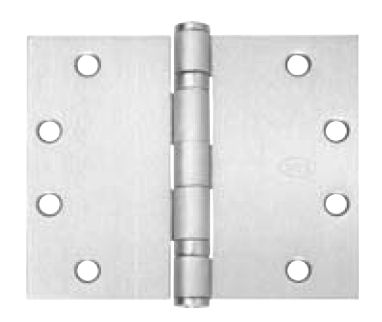
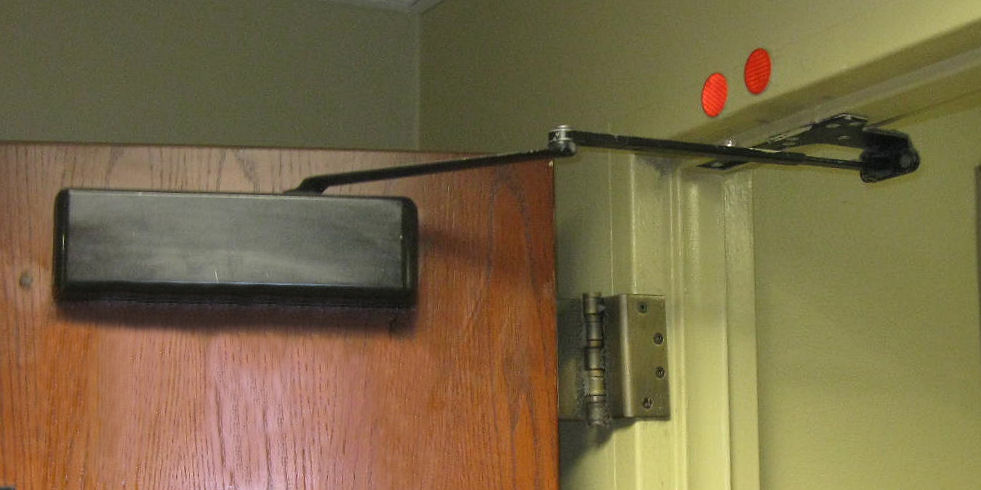
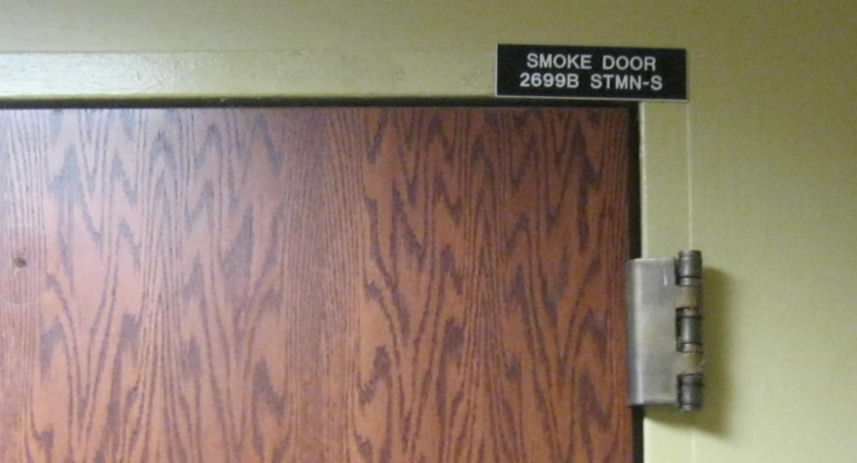
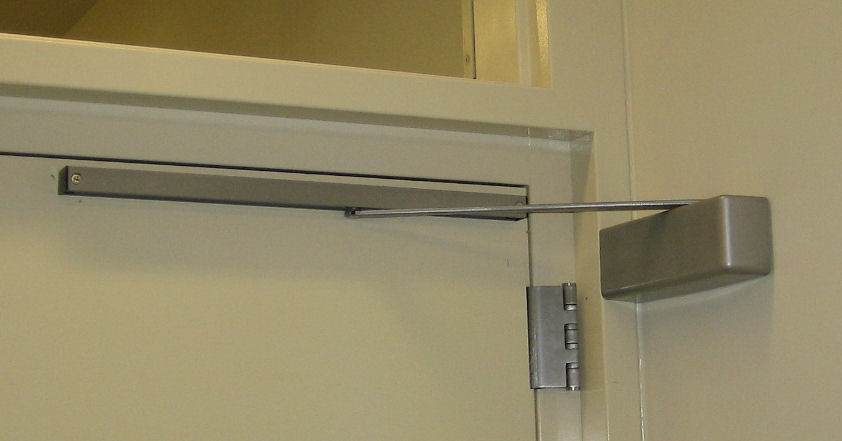

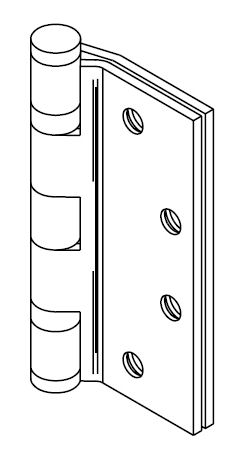

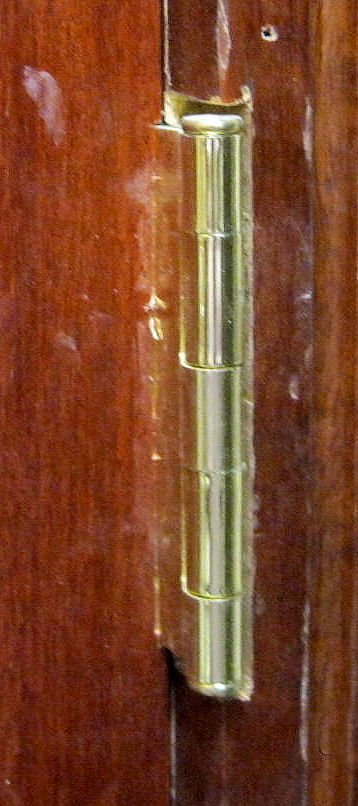
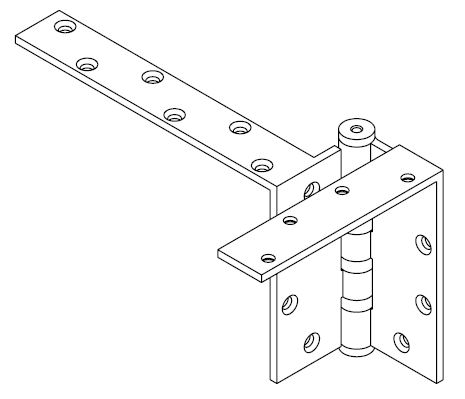
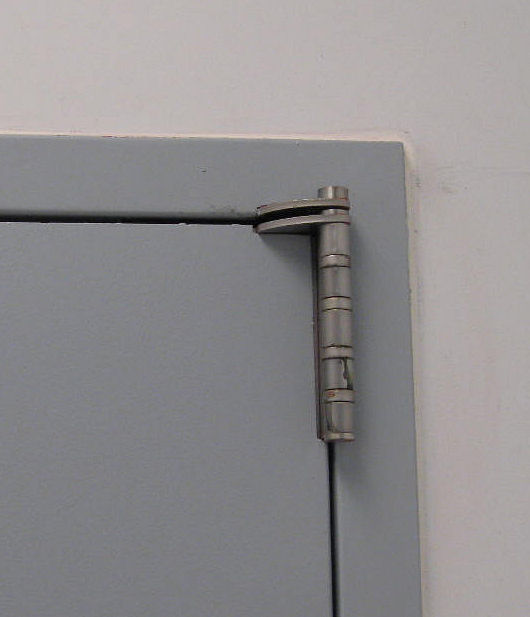




This is a great post with wonderful illustrations and photos! Thanks to all!
What about continuous hinges Select, Roton etc.?
I’ll put continuous hinges on the list, John!
Great article….very informative
Great article , but just want to mention that a special door closer template should be used when using swing clear hinges.
Lori the anchor hinge is different for a beveled and a non beveled hinge edge. You have to know which in order to get the correct hinge. If you do not it could be a very costly mistake.
Next… Soss, Paumelle and Harmon.
Dear All;
We are a brazilian company which sells finish materials for the construction of hospitals, hotel, buldings, … .
We are interested on buyn swing clear hinges. We would like to contact manufactures.
Can you supply some company names and contacts ?
Hi Sidney –
I would recommend contacting our general manager in Brazil – Ricardo Espinosa. His email address is ricardo.espinosa@irco.com.
– Lori
Hey Lori,
I wish I’d thought to print some of the pictures when teaching COR113 this past week. Back to work and I’ve got a facility that wants swing clear hinges on the EVS/Soil/Clean doors. And yes, most of those doors are oversized, but it is a preference their facility guy has. They use 4040’s and some of the doors will be rated and require closers. I’ve been digging around and can find information on swing clear hinges and push side mounting. As far as pull side mounting goes with swing clear hinges, is it strictly to be done with a track type closer? I’ll go look it up, but wouldn’t I be limited by the door width with the track mounted closers? I usually shy away from them unless the doors are being held open most of the time!
Thanks much as always! Jodie
Hi Jodie –
I don’t know of a restriction that requires track style closers when you use swing-clear hinges and the closer is pull-side-mounted. You may want to check with LCN Engineering. I would call for you but I’m in meetings all day.
– Lori
You can definitely mount a regular arm 4040 on pull side without track. It is in the instructions that comes with, you just need to make measurements from pin(pivot) point of door. Needing to find PA mount for double egress with swing clear hinges. Yale closers 8501.
We have a facility that still uses Anchor Hinges, and would like to convert them to Continuous Hinges. Are there any articles you know of that would help convince them it would be a beneficial move besides the cost?
Thanks, Keep up the good work with all your postings.
Judy
In the picture with Double Egress frame and Wide Throw hinges I came across this exact situation. While the illustration was very helpful I am very confident that the hinges shown are NOT 6″ WT and are 8″ Wide Throw hinges instead.
I think you’re right! I changed it – thanks!
– Lori
Where can I buy raised barrel hinges to Malta please
Hi Paul –
I’m not sure where you can buy raised barrel hinges in Malta. I’m sorry.
– Lori
I have a situation where an architect wants a Stanley closer CLD-4551 EDA with a Markar Custom wide throw Continuous hinge 9 1/2″(180 degree) on a double egress opening. Stanley doesn’t have a template available, but LCN was very helpful with only one phone call. The 4111 closer EDA will work, but you must specify size of hinge when ordering) Thanks for the advise and post Lori.
Lori,
Are you aware there was a Second Edition of Brownell’s book published in 1961? It supposedly came with a “supplement,” but I don’t know what the supplement was.
There are VERY few copies still in circulation, as you know. Thankfully, the University of Michigan has an excellent digital library that includes many American historic works. There I found (all by Brownell):
Taking the mystery out of builders’ hardware, by Adon H. Brownell (1940)
Hardware age builders’ hardware handbook (1st Edition, 1956)
Hardware age builders’ hardware handbook (2nd Edition, 1961)
Here is a link to the 2nd edition book cited above: https://babel.hathitrust.org/cgi/pt?id=mdp.39015031696464;view=1up;seq=9
If that link no-workie, try this one: https://babel.hathitrust.org/cgi/ls?field1=ocr;q1=hardware%20age%20adon;a=srchls;lmt=ft
I need a wide throw hinge for my exterior French door. Can’t find them anywhere. Does anyone know where to find them?
Any idea where I can buy raised barrel hinges for my masonite entergy french doors? They are 4″x4″ brass finish with 4 holes on each leaf.
Very nice! (Also thanks David for the link to Hardware age builders’ hardware handbook)
Here is the Harmon hinge old & new version!
https://babel.hathitrust.org/cgi/pt?id=mdp.39015031696464&view=image&seq=51
http://www.harmonhinge.com/s/WH_175inch_TraditionalHarmonHinge_DoorDiagram-m3la.pdf
I was searching for comparision between Anchor hinge and Pivot Reinforced Hinge, which took me to this page.
1. is this an additional 4th hinge on a 84″ high door leaf, or it can be the 3rd hinge?
2. is Anchor hinge stronger because its leaf are one pc bent metal, instead of pivot reinforced hinge which is 2pc metal on its leaf?
PS: the image shown on this pg – Bommer graphic is Anchor hinge while the photo of closed door has pivot reinforced hinge shown.
great post on Hinge Types and Applications and really basic to understand !